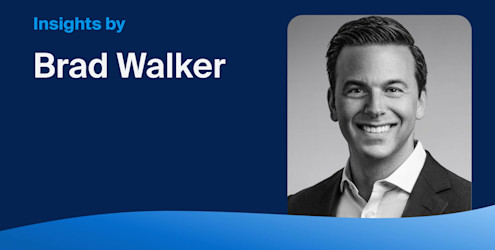Contingent yield notes do not seek price appreciation or growth of the underlying asset but rather the creation of a contingent income stream.
Bigger picture, structured investments are debt obligations that combines a zero-coupon bond with an options package to create a single investment security. This single security enables investors to seek a predetermined payout profile linked to the performance of a separate underlying asset (“underlier”). An investment in public equities, through indices, ETFs, single stocks, commodities, or currencies, can be accessed via a structured investment, which may expand an investor’s opportunity set and provide certain benefits associated with alternative investments, along with its associated risks.
Understanding Contingent Yield Notes as a Structured Investment
In previous pieces on structured investments, we discussed two different strategies of growth-focused notes that may both enhance returns and provide downside risk mitigation. Another strategy we will be analyzing is known as a contingent yield note. Generally, these notes do not seek price appreciation or growth of the underlying assets, but rather the creation of a contingent, potentially higher-yield income stream. In many cases, these strategies may provide above-market returns as they may have a higher risk associated with equity market exposure and the potential for contingent loss of both principal and coupon, when in comparison to traditional fixed-income securities.
Fixed vs. Contingent Yield Notes and Issuer- vs. Auto-Call: What’s the Difference?
Contingent yield notes and callable yield notes are both influenced by US treasury yields and the broader yield curve. Thus, they offer different opportunities and risks for investors.
While the US Federal Reserve (Fed) and the volatility of public markets have a major impact on them, as well as other investment vehicles, it's essential to know what you’re getting into (i.e., potential risks, rewards, timelines, etc.) before investing.
Fixed Yield Notes
With fixed yield notes, the anticipated coupon payments (cash flow) and timing of them are generally known in advance. Coupon payments are generally made regardless of how the underlier(s) performs. Coupon payments, like investment principal in a structured note, are subject to the credit risks of the issuer and any guarantor.
Fixed coupon structured notes generally pay a fixed rate of interest over the life of the investment.
This type of product seeks to provide a steady stream of income (e.g., fixed coupon notes).
A fixed coupon payment is provided until maturity and the note may offer partial or full downside protection.
Fixed coupon structured notes generally offer fixed coupons that are lower than contingent coupons where payments are generally dependent on underlier performance.
Contingent Yield Notes
Contingent yield notes pay coupons that are generally contingent upon the underlier(s) performance. This type of note may not provide any coupon payments during the term of the product if the underlier(s) is below that price, a coupon will not be paid.
Contingent coupon payments are not fixed, but they are contingent upon how the underlier(s), or basket of assets, performs.
These coupon payments generally depend upon a condition being met, such as the price of the underlier(s) being above a certain level on a particular observation date.
If, on any observation date, the closing price or the asset value is above a certain predetermined price, a coupon payment will generally be made. If the underlier(s) is below that price, a coupon will not be paid.
Contingent coupon structured notes may not offer any interest payments during the term of their product.
Issuer-Callable Yield Notes
Pays a fixed or contingent coupon if the underlier(s) is above a predetermined level at a given observation date(s) and may be called prior to maturity at the issuer's discretion.
Auto-Callable Yield Notes
Pays a fixed or contingent coupon if the underlier(s) is above a predetermined level at a given observation date(s). Automatically called (i.e., redeemed) if the underlier(s) is at or above a predetermined level at a given observation date. If the note is not called, it rolls on to the next observation period.
Understanding the Potential Risks of Contingent Yield Notes
An investor considering an investment in contingent yield notes should carefully review any materials describing such a product, and its risks, including but not limited to the following specific risks:
Market risk
Call and reinvestment risk
Credit risk
Interest rate risk
Illiquidity risk
Capped return
No direct ownership of the underlying assets
Returns may underperform broader market
Tax considerations
Origination costs





